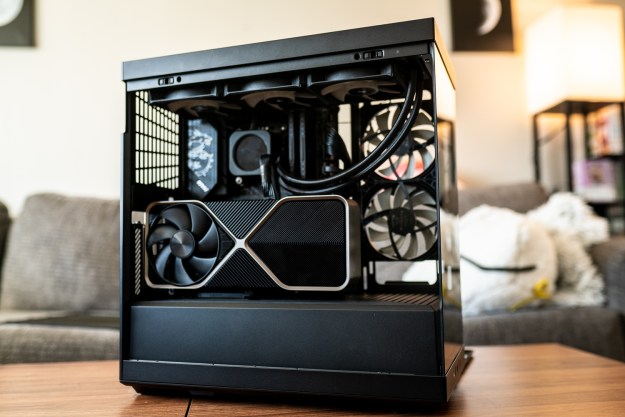All the rumors about the RTX 5090 were pointing toward another ridiculous, three or four-slot GPU. But a recent rumor states that Nvidia is moving in the opposite direction with its upcoming Founders Edition card.
The comment comes from known leaker @kopite7kimi on X (formerly Twitter) as a reply to a post by Overclock3D. According to the leaker, the 5090 Founders Edition is leaning toward a more practical dual-slot design.
No, RTX 5090 FE has a 2-slot cooler.
— kopite7kimi (@kopite7kimi) May 29, 2024
It was initially thought that the RTX 5090 would use an abandoned RTX 4090 Ti design, but if the new rumor turns out to be true, Nvidia has something newer and more efficient in mind.
The leaker answers some additional questions in the replies and indicates that the 5090 FE will have two fans instead of three. The question of power draw is the most relevant in this conversation, as the RTX 4090 sat at an unprecedented 450 watts.
When asked in the replies if the RTX 5090 will be lower-powered, the leaker responded with, “I don’t know. But I am sure the cooling design is more efficient.”
That might sound obvious, but it’ll be the most pressing question to answer going into the launch of the next-gen, flagship GPU that will lead off the RTX 50-series.
The RTX 4090 was known for being obtuse, often not fitting well in conventional cases, cracking circuit boards, and even melting power adapters. If Nvidia can make the RTX 5090 a bit more practical while still representing a major step forward in performance, that will be a big deal.
Other rumors about the video card include that it will use GDDR7 memory and may have have 24,576 CUDA cores. The release window right now will either be this fall or in early 2025. Initial reports said the RTX 5080 and 5090 will launch together in 2024, but the latest rumors say that the RTX 5080 will launch first on its own as a “return to form” for Nvidia’s launch cycles. Some were hoping Nvidia would give up on the idea of the RTX 5090 entirely, and while that’s unlikely, a more contained GPU is certainly a good alternative.
Editors' Recommendations
- I’m attending the world’s biggest PC show next week. Here’s why I’m so excited
- This $7 app doubled the performance of my gaming PC — seriously
- Nvidia might power your next handheld gaming PC
- I’ve built hundreds of PCs. These are the mistakes I’ve regretted most
- I want to love Asus’ gaming earbuds, but there are problems



